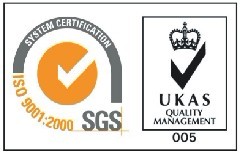Shenzhen Hongxuan Optoelectronic Technology Co., Ltd.
News
Your current location£ºHome > News > Company newsIntroduce Plastic Optical Materials
Views: Date£º2013/5/28

In a high-volume production environment, optical components or optical systems require low-cost materials and low-cost fabrication techniques. Plastic optics are used frequently today primarily for this reason.Plastic optical materials also have lighter weight, higher impact resistance, and offer more configuration possibilities than glass materials.Configuration flexibility is one of the greatest advantages of plastic optics. Aspheric lenses and elaborate shapes can be molded, for example,lenses with integral mounting brackets, spacers, and mounting features for easy alignment.There are some issues, however, that must be considered when using plastic as an optical material. The principal disadvantage of plastic is its relatively low heat tolerance. Plastic melts at a much lower temperature than glass. It is less resistant to surface abrasion and chemicals.Adhesion of coatings on plastic is generally lower than on glass because of the limitation on the temperature at which the coatings are deposited, due to a low melting temperature of plastic. Further, the durability of coatings on plastic lenses is less robust than on glass. In addition, coatings on plastic often craze over time. The use of ionassisted deposition of plastic coatings offers harder and more durable coatings on plastic.
The choice of optical plastic materials is very limited, which means that there is not a lot of freedom in the optical design process. A very important limitation is the high thermal coefficient of expansion and a relatively large change in refractive index with temperature. The refractive index of plastic materials decreaseswith temperature (it increases in glasses), and the change is roughly 50 times greater than in glass. The thermal expansion coefficient of plastic is approximately 10 times higher than that of glass. High-quality optical systems can be designed with a combination of glass and plastic lenses. In a combination with glass components in the system, plastic lenses can reduce the price and complexity of the optical system tremendously. When the optical power is mainly distributed over the glass components in the system, with one or two weak-powered plastic aspheric correctors, optical aberrations, especially distortion in wide field-of-view systems, can be very efficiently removed. Weak-powered plastic elements are used to minimize the effect on focus with temperature change.
Plastic optics can be injection molded, compression molded, or fabricated from cast plastic blocks. Fabrication of plastic elements by machining and polishing from cast plastic blocks is economical in the case of large optical elements, where the molding process has severe limitations. Compression molding offers a high degree of accuracy and control of optical parameters. However, injection molding is the most economical process. It offers moderate optical performance, which is acceptable in a lot of applications. Manufacturing of molds is an expensive process, but it pays off in high-volume production. During the system development phase, plastic optics can be very successfully diamond turned for prototyping, since the cost of diamond turning is lower than the cost of the manufacturing of molds. With today¡¯s high-quality diamond turning, the scattering effect from the turning grooves is most often under control, and if you have a good vendor, this should not be of concern for visible applications. Sometimes ¡°postpolishing¡± is required to remove the turning mark residuals.
During the design of systems with plastic elements, the optical designer has to control the shape of the lenses more carefully than for glass elements. The shape (or bending) of the lens should be optimized for a good flow of the plastic material inside the molds. The thickness of the lens should be quite small, and the parting line, which is the line of contact of two molds, should go through the lens material. It is also important to eliminate inflection points on the lens surfaces in the case of compression molding. This limits the available lens shapes, and requires more parameters to be controlled in the optimization process.Additionally, the lens shape and the refractive index change with temperature have to be monitored, or the system has to be optimized for a given temperature range.
A few of the most commonly used plastic materials are acrylic (polymethyl methacrylate), polystyrene, polycarbonate, and COC (cycloolefin copolymer):
Acrylic.The most common and important optical plastic material. It has a good clarity and a very good transmission in the visible spectrum,a high Abbe number (55.3), and very good mechanical stability.Acrylic is easy to machine and polish, and it is a good material for injection molding.
Polystyrene.Also a good plastic, cheaper than acrylic, but it has a slightly higher absorption in the deep blue spectrum. Its index of refraction (1.59) is higher than that of acrylic but the Abbe number is lower (30.9). It has a lower resistance to ultraviolet radiation and scratches than acrylic. Acrylic and polystyrene make a viable achromatic pair.
Polycarbonate.More expensive than acrylic, but it has very high impact strength and a very good performance over a broad temperature range. Polycarbonate is often used for plastic eyeglasses. A common form of polycarbonate in eyeglasses is CR39.
COC.A relatively new material in the optics industry, it has many characteristics similar to acrylic. However, its water absorption is much lower and it has a higher heat distortion temperature. COC is also brittle. A new brand name for COC is Zeonex.Comparative properties of optical plastics as follows.
| Property | Acrylic | Polystyrene | Polycarbonate | COC |
| Index@588nm | 1.49 | 1.59 | 1.586 | 1.533 |
| Abbe# | 55.3 | 30.87 | 29.9 | 56.2 |
| dn/dTx10e-5/°C | -8.5 | -12 | -10 | -9 |
| Linear expansion coefficient/°C | 6.5x10e-5 | 6.3x10e-5 | 6.8x10e-5 | 6.5x10e-5 |
| Transmission (%) | 92 | 88 | 90 | 91 |
| Birefringence | Low | High/low | High/low | Low |
| Tensile strength (lb/in2) | 10,000 | 6000 | 9000 | 8700 |
| HDT at 264 lb/in2(°C) | 92 | 82 | 142 | 120-180 |
| Impact strength (ft-lb/in) | 0.3 | 0.4 | >5 | 0.45 |
| Density (g/cm3) | 1.2 | 1.05 | 1.2 | 1.02 |
| Water absorption (%) | 0.3 | 0.02 | 0.15 | 0.01 |
| Advantages | High stiffness, hardness, chemical resistance and low cost | High index and low cost | Excellent impact resistance and high HDT | High stiffness, high HDT, low water absorption |
| Disadvantages | Brittle and heat resistant | UV absorption, birefringence, and low-impact strength | High birefringence ,low Abbe #,and poor scratch resistance | Brittle |
News:Accurate introduction and selection of aspheric lens¡¡¡¡¡¡
Next news£ºNull
















